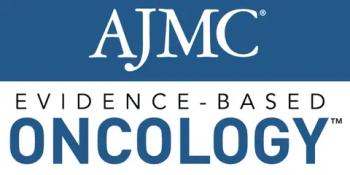
Although the gap between low and high value has been established in many areas, insurance design has yet to adapt, according to a panel at the 20th annual Value-Based Insurance Design (VBID) Summit.

Although the gap between low and high value has been established in many areas, insurance design has yet to adapt, according to a panel at the 20th annual Value-Based Insurance Design (VBID) Summit.

Michael Chernew, PhD, professor of health care policy and director of the Healthcare Markets and Regulation Lab, Harvard Medical School, shares how cost-sharing policies shape access to critical health care services and influence value-based insurance design.

The second Trump administration is expected to bring changes to Medicaid, Medicare Advantage, and the health insurance exchanges, as well as highlight the Make America Healthy Again (MAHA) movement, speakers at the Value-Based Insurance Design Summit said.

Speakers at the 2025 Value-Based Insurance Design summit recapped the accomplishments made over the past 20 years in designing insurance benefits with value in mind and looked ahead to iterations to come.

For more than a decade, certain high-value preventive care services have been covered at no cost to patients under the Affordable Care Act, but a current legal challenge has the coverage at risk.

After years of efforts to reduce low-value care, panelists at the 2024 Value-Based Insurance Design Summit proposed a new strategy: drawing a line in the sand that payers will not be on the hook for these services.

Over the course of the last 20 years, high-deductible health plans (HDHPs) have undergone an evolution. Today’s plans, with more high-value services covered predeductible, can improve care for people with chronic diseases, said panelists at the 2024 Value-Based Insurance Design (V-BID) Summit.

During a session of the 2024 V-BID Summit, panelists Stacie Dusetzina, PhD, and Inma Hernandez, PharmD, PhD, discussed how access to essential medications is curtailed not just by the longstanding complexities of insurance design but also by emerging threats such as supply chain weaknesses and cyberattacks.


Panelists at the Value-Based Insurance Design Summit discussed research and reforms to address the high cost of medications and the impact it has on equitable access to treatment.

Panelists at the Value-Based Insurance Design Summit discussed ways their organizations are looking to create a better benefit design to promote health equity and address known disparities.

Panelists at the keynote session of the Value-Based Insurance Design Summit highlighted what their organizations are doing in health equity.

Reducing low-value care means saving money, reducing potential harm, and creating room for high-value care to be delivered in the United States.

Panelists touted the ability to pay for items and repairs to keep Medicare beneficiaries healthier at home, avoiding potentially costly hospitalizations and complications.

Without addressing rising costs, the problem of underinsurance in health care coverage will remain, said panelists at the 2022 V-BID Summit, discussing some of the smaller steps that are being proposed or are already in place to try to ease the financial burden.

At the 2022 V-BID Summit, hosted by the Center for Value-Based Insurance Design at the University of Michigan, representatives of CMS and the Commonwealth Fund gave an update on the efforts to monitor, evaluate, and improve health equity in the United States.

Coverage from the 2021 COA Payer Exchange Summit.

Generally, life sciences companies are aligned around the benefit of using value-based insurance design (VBID) to address health care costs and ensure that medications get to the patients who need them.

A panel of experts provided consumer insights into value-based insurance design (VBID) and how the COVID-19 pandemic may have changed consumer behaviors in a way that VBID may be able to address as the country emerges from the pandemic.

A desire to remove barriers to high-value care and provide services that would improve health and quality of life drove early adopters of value-based insurance design (VBID).

A panel of policy experts, including employees of the previous 2 administrations and a former lobbyist for health plans, discusses achievements of value-based insurance design and how to take the concept to the next level.

Value-based insurance design (VBID) aligns patient cost sharing with the value of clinical services, so that patients pay less for high-value services and more for unnecessary, low-value services. While there has been increased interest in VBID, with CMS expanding the VBID demonstration in Medicare Advantage to all 50 states, the situation on the state exchanges is different: The plan has to be cost neutral, so in order to remove cost sharing for high-value services, cost sharing has to increase for other, low-value services.

While the high price of drugs is an issue, what is really important is the actual cost patients are faced with at the pharmacy counter, said Ted Okon, executive director of the Community Oncology Alliance, and Daniel Klein, president and executive director of the Patient Access Network Foundation, at the University of Michigan Center for Value-Based Insurance Design (V-BID), V-BID Summit.

The concept of value is a well-known topic among health policy experts, the payer community, and policy makers, but patients do not necessarily have the same idea of what value means. When discussions about removing low-value care from the system to save money come up, patients might get the wrong idea of what is going on and why.

The Virginia Center for Health Innovation (VCHI) is receiving a $2.2 million grant from Arnold Ventures to launch a 3-year statewide pilot to reduce the use of low-value care in the state of Virginia.

Panelists discussed low-value care, unnecessary services, and what can be done to address overuse in healthcare during a panel at the University of Michigan Center for Value-Based Insurance Design’s (V-BID) annual V-BID Summit on March 14.

During a session on expanding the role of value-based insurance design (VBID) in public insurance at the University of Michigan V-BID Center’s annual V-BID Summit on March 14, panelists representing 3 different payers shared how they have seen value-based principles take hold in their plans and their predictions for the future.

Panelists Kavita Patel, MD, Brookings Institute; Michael E. Chernew, PhD, Harvard Medical School; and Katy Spangler, Spangler Strategies discussed implementing the value-based insurance design concept in health policy and payment models, challenges with quality measurements, the role of employers in value-based care, and more at the VBID Summit, held March 14 by the University of Michigan Center for Value-Based Insurance Design.

Panelists brought diverse viewpoints to a discussion on creating a smarter high-deductible health plan at a session during the University of Michigan Center for Value-Based Insurance Design (V-BID)’s annual V-BID Summit on March 14, 2018, at the Big House in Ann Arbor, Michigan.

259 Prospect Plains Rd, Bldg H
Cranbury, NJ 08512
© 2025 MJH Life Sciences®
All rights reserved.
